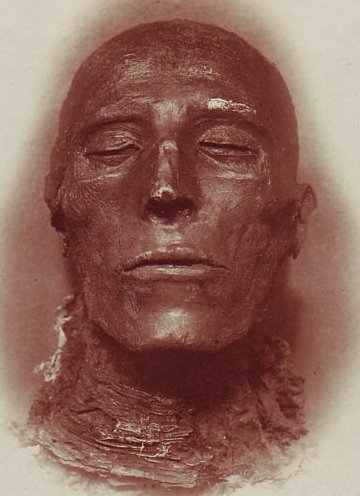

“Andaman—Second!” was the seventh installment of Sax Rohmer’s serial, Fu-Manchu first published in THE STORY-TELLER in April 1913. The story would later comprise Chapters 18-20 of the novel, The Mystery of Dr. Fu-Manchu (re-titled The Insidious Dr. Fu-Manchu for U.S. publication). Rohmer returned the series to its Holmesian roots by mining Sir Arthur Conan Doyle’s “The Adventure of the Bruce-Partington Plans” for inspiration. Conan Doyle’s case concerns stolen submarine plans taken from Cadogan West while Rohmer’s story involves stolen aero-torpedo plans taken from Norris West. “The Adventure of the Bruce-Partington Plans” was published in 1912, just a few months before Rohmer wrote “Andaman—Second!” and shows that Sherlock Holmes was still very much a model for the Fu-Manchu series at this early stage.
The story starts out with Dr. Petrie in the final throes of fighting his feelings for Karamaneh. He tries telling himself that slavery in the 20th Century is an impossibility, but he cannot doubt Karamaneh’s account of her tragic life of bondage and enforced servitude. Try as he might to convince himself that she is too foreign to his values and culture, that she has been jaded and corrupted by her life and experiences, he cannot deny his heart. The reader’s expectation at this point is that Rohmer will bring the two lovers together once Petrie wins her freedom from Dr. Fu-Manchu. Of course, it is worth remembering that Rohmer delights in breaking with tradition. Happy Endings are never assured in his fiction.
Following this introspective beginning, Rohmer moves the plot into high gear by having Nayland Smith conduct Petrie to a Limehouse storefront which is a literal front for an Oriental nightclub. Rohmer’s prose is rushed at this point and it takes a bit for the reader to learn that Smith and Petrie are disguised as Turks complete with fez and make-up to darken Petrie’s complexion. The setting is enjoyable, although under-written, as Rohmer gives us an enticing conglomeration of foreign cultures. Petrie marvels at Smith’s ability to speak dozens of foreign languages like a native and he is apparently convincing enough to gain entry to the nightclub with its African, Arab, Egyptian, Greek, Turkish, and Chinese clientele. No sooner are our heroes seated at a table, then they spy Karamaneh and the chase is on with only Karamaneh’s voice giving a cryptic warning of “Andaman—Second” to Petrie to serve as a clue.
Smith and Inspector Weymouth are both quite slow to puzzle out what “Andaman—Second” may refer to, but they can be forgiven for the theft of Norris West’s aero-torpedo plans by Chinese agents that same night is reason enough to serve as a distraction. The story quickly shifts to West’s hotel room where the aviator is found heavily drugged with hashish. Rohmer indulges some of his finest psychotropic fantasies here by having West reveal he gave away the combination to the safe where the plans were kept to his Chinese visitors and saw the words appear before his face as if they were written in the air. As he did previously with DeQuincey’s Confessions of an Opium-Eater, Rohmer is quick to have his characters cite authors and works to lend credence to his fanciful claims – in this instance he has Smith and Petrie discuss Bayard Taylor’s The Land of the Saracen and Moreau’s Hashish Hallucinations to confirm Norris West’s incredible experiences under the influence of the drug.
Somewhere along the way the truth has dawned on Smith and he reveals to Petrie that the Andaman is a ship of the Oriental Navigation Company about to leave London en route to China. The race is on to the docks. If the veteran mystery reader expects an unmasking and retrieval of the stolen aero-torpedo plans, Rohmer is determined to confound their expectations. Smith and Petrie board the ship and prepare to search the passengers. They turn up nothing. As the Andaman sets sail, they hear the disembodied voice of Dr. Fu-Manchu remark, “Another victory for China, Mr. Smith.” Much like the disembodied warning from an unseen Karamaneh of “Andaman—Second!” at the outset of the story, this similar ending coupled with Norris West’s peculiar viewing of his own words emerging from his mouth and written in the air in front of him, leaves the reader with a greater sense of fantasy and the Music Hall tradition of theatrical Oriental magicians than rational criminal investigations.
The story is diverting enough, but Rohmer has little here to advance the plot. “Andaman—Second!” stands as a marking time story and little else. The reader is left eager to reach a resolution with Fu-Manchu dead or behind bars and Karamaneh united with Dr. Petrie at last. American and British readers in 1913 had every reason to expect a traditional ending to the serial. They were also bound to have their expectations shattered by an ambitious young thriller writer determined to make a name for himself with his first published novel.


.jpg)
I love this series, I have to say. I enjoy these books, and I think I enjoy your essays on them just as much.
ReplyDelete